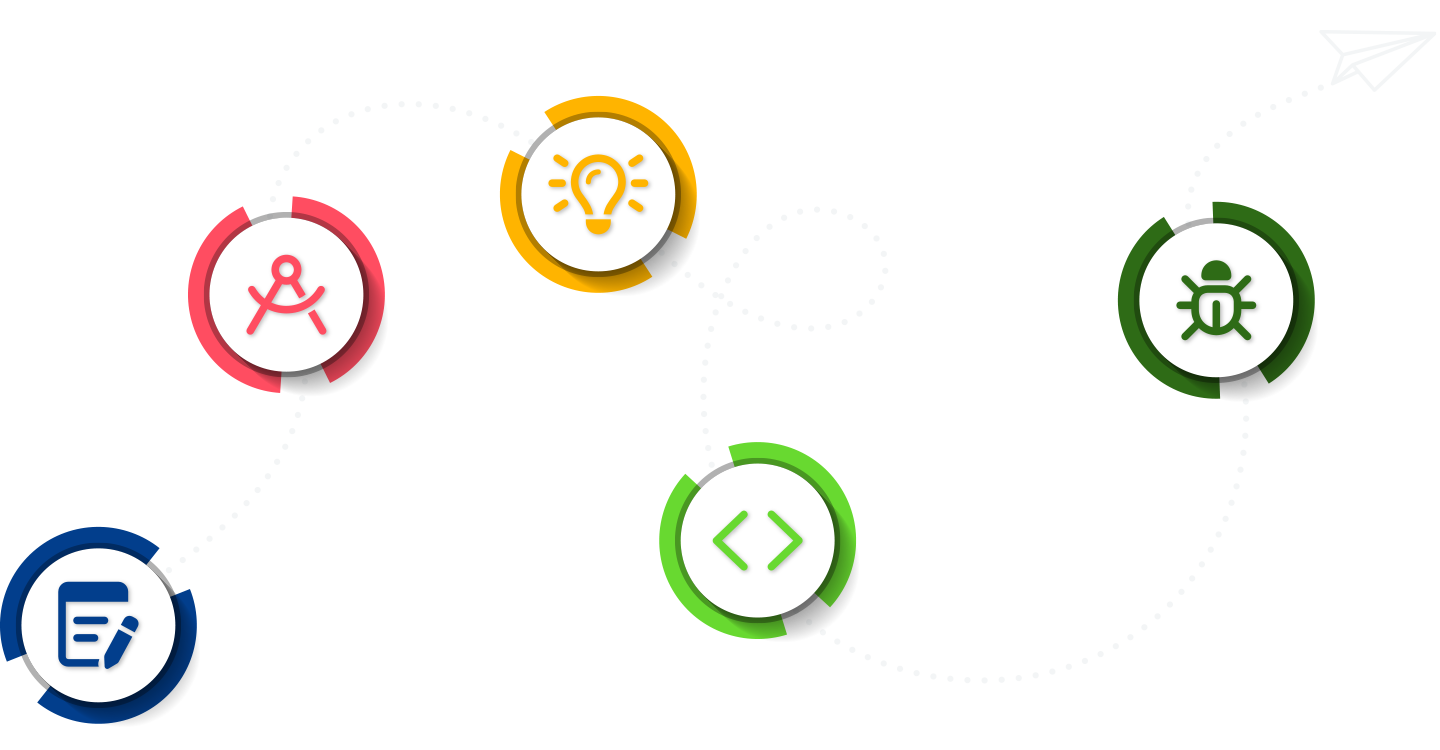Design Process
A Process Built to Adapt,
& A Philosophy That Guides It


I approach every project with a structured yet flexible design methodology, ensuring alignment with both user needs and business goals. While every project follows core design phases, the way they are applied depends on context. A full product launch requires deep research and planning, while feature iterations move faster through testing and refinement. While the process ensures the right execution for each project, design is more than just structure. A strong design philosophy guides every decision, balancing creativity, usability, and business impact to create solutions that feel effortless and intuitive. Below, I break down how my process adapts to different project types and explore the guiding principles that shape my approach to product design.
No two design projects are the same. Creating a brand new product requires deep research and exploration, while redesigning an existing feature demands careful iteration and refinement. Some projects follow a structured, methodical approach through every phase, while others, like proof-of-concept work or urgent fixes, require rapid decision-making and lean execution. The key is adapting the process to fit the needs of the project while balancing user needs, business goals, and technical constraints. By tailoring research, ideation, prototyping, and testing to match each challenge, I ensure that every design solution is both strategic and impactful.
I absolutely love designing entirely new products. There’s something exhilarating about taking an idea from nothing and shaping it into something real, functional, and impactful. I’ve led the design of a dozen brand-new products, engaging in every stage of the process—from initial concept to final implementation.
Since there’s no existing user base, deep research and validation are critical to ensuring the product solves a real need. That’s why I start with thorough research and market gap analysis, uncovering opportunities that shape the foundation of the product. This phase expands the concept development process significantly, allowing for more informed, strategic decision-making. With the right balance of creativity and structure, the goal is always the same: bring innovative ideas to life while ensuring they are practical, scalable, and user-friendly.
Redesigning an existing product is like remodeling a house while people are still living in it. You have to improve the experience without disrupting daily life. Unlike new products, redesigns come with history: existing users, established workflows, and technical limitations. That is why research and iteration are essential. The key is understanding what is working, what is not, and how to refine it in a way that makes the transition seamless.
I love the challenge of breathing new life into outdated or fragmented products. By balancing user needs with business goals, a well-executed redesign can turn frustration into efficiency, confusion into clarity, and legacy systems into modern, intuitive experiences.
Adding a new feature to an existing product is like expanding a house. You want it to feel natural, not like an afterthought. Users expect consistency, and the challenge is ensuring the new functionality fits seamlessly into the existing experience without disruption.
This is where collaboration shines. Working closely with product and engineering teams ensures the feature is designed with both usability and technical feasibility in mind. By validating with real users early and often, we can refine and optimize before launch, creating something that feels like it was always meant to be there.
Sometimes, a feature is not broken, it just is not working as well as it could be. A low-performing feature is often the result of misaligned user needs, outdated design, or shifting business priorities. The key is diagnosing the real problem before making changes.
I enjoy refining features through incremental iteration rather than a full-scale overhaul. Small, thoughtful improvements can have a massive impact, reducing friction and making the experience more intuitive. With user feedback and data guiding the process, a frustrating feature can be transformed into a powerful, indispensable tool.
When time is limited, there is no room for perfectionism, just smart decisions and rapid execution. These projects are all about lean problem-solving, quickly identifying core needs, and prototyping solutions that can be tested and iterated on fast.
I thrive in these high-pressure scenarios. By cutting through the noise and focusing on what truly matters, it is possible to deliver functional, impactful solutions in a fraction of the time. Whether it is a proof-of-concept or a time-sensitive fix, the goal is always the same: move fast without sacrificing usability or quality.
Great design is more than aesthetics, it's about understanding people, solving real problems, and delivering solutions that feel effortless. My approach focuses on balancing user needs, business goals, and ethical responsibility to create products that are not only functional but also meaningful.
A successful product serves both the people using it and the organization behind it. My goal is to create experiences that feel intuitive, reduce friction, and empower users, all while driving measurable success for the business. A great design aligns user satisfaction with business strategy, ensuring that improving the experience also strengthens long-term engagement and growth.
Innovation does not have to come at the expense of usability or cost-effectiveness. The best designs find a balance between creativity, feasibility, and business impact. Whether designing for a startup or an enterprise SaaS platform, my approach is to create solutions that are both engaging and scalable without unnecessary complexity. A well-designed experience should feel effortless, no matter the constraints.
Great products are not built in isolation. Continuous iteration, user feedback, and adaptability are core to my process. I believe in refining designs based on how people actually use them, not just how we expect them to. Every iteration is an opportunity to improve, simplify, and make interactions more meaningful.
Thoughtful design should also be flexible. Whether it is ensuring accessibility, designing for efficiency, or considering long-term scalability, I approach every project with sustainability in mind. A well-crafted experience should not just work for today, it should evolve, adapt, and stand the test of time.